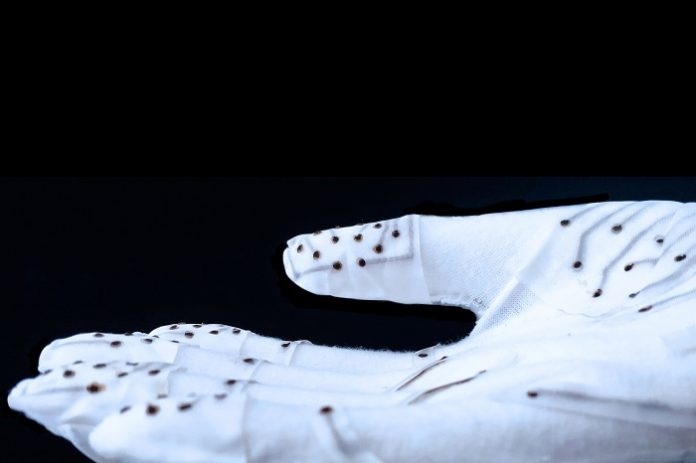
When you pick up a balloon, the pressure to keep hold of it is different from what you would exert to grasp a jar. And now engineers at MIT and elsewhere have a way to precisely measure and map such subtleties of tactile dexterity. The team has designed a new touch-sensing glove that can “feel” pressure and other tactile stimuli. The inside of the glove is threaded with a system of sensors that detects, measures, and maps small changes in pressure across the glove. The individual sensors are highly attuned and can pick up very weak vibrations across the skin, such as from a person’s pulse.
When subjects wore the glove while picking up a balloon versus a beaker, the sensors generated pressure maps specific to each task. Holding a balloon produced a relatively even pressure signal across the entire palm, while grasping a beaker created stronger pressure at the fingertips.
The researchers say the tactile glove could help to retrain motor function and coordination in people who have suffered a stroke or other fine motor condition. The glove might also be adapted to augment virtual reality and gaming experiences. The team envisions integrating the pressure sensors not only into tactile gloves but also into flexible adhesives to track pulse, blood pressure, and other vital signs more accurately than smart watches and other wearable monitors.
“The simplicity and reliability of our sensing structure holds great promise for a diversity of health care applications, such as pulse detection and recovering the sensory capability in patients with tactile dysfunction,” says Nicholas Fang, professor of mechanical engineering at MIT.
Sensing with sweat
The glove’s pressure sensors are similar in principle to sensors that measure humidity. These sensors, found in HVAC systems, refrigerators, and weather stations, are designed as small capacitors, with two electrodes, or metal plates, sandwiching a rubbery “dielectric” material that shuttles electric charges between the two electrodes.